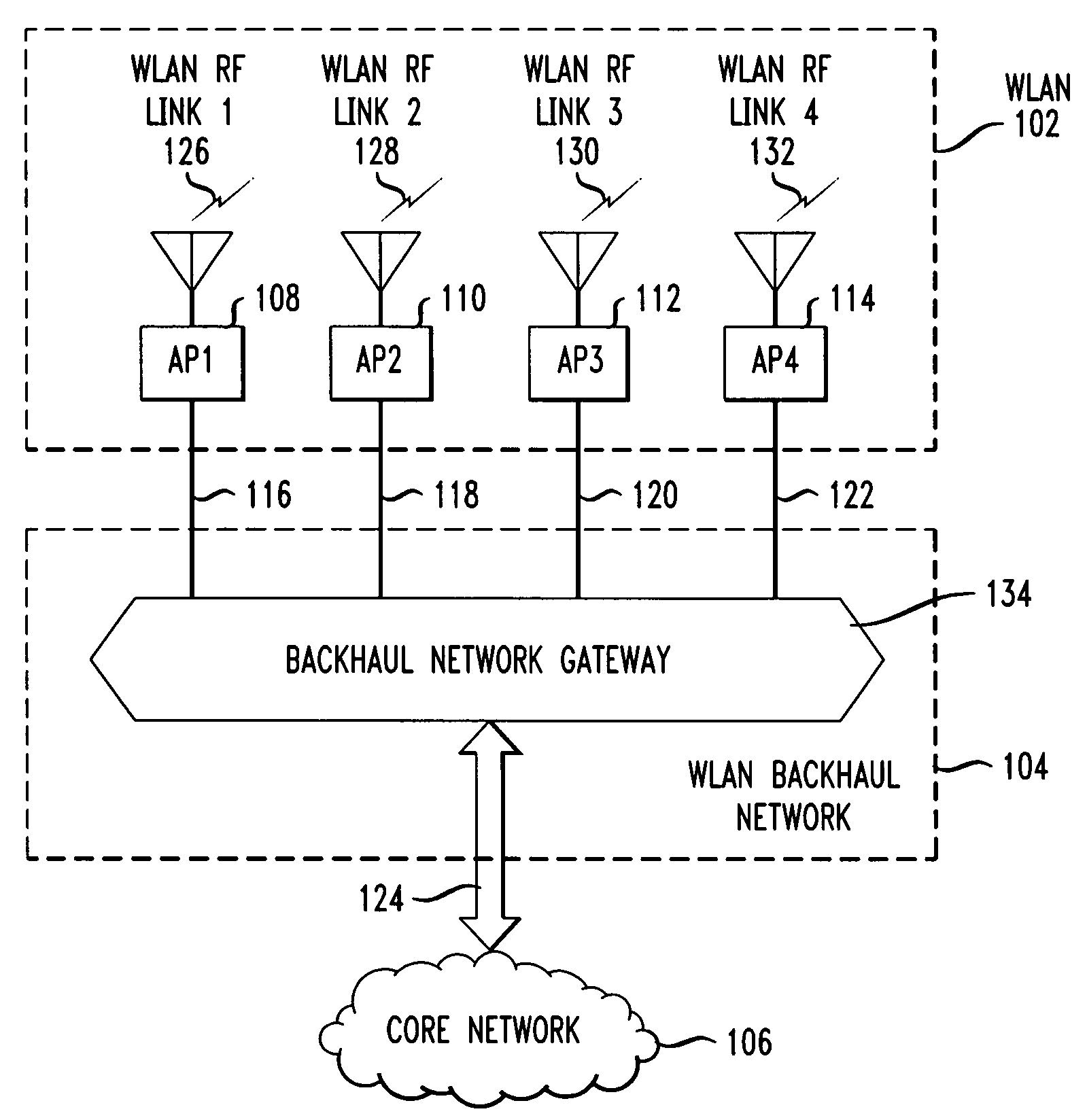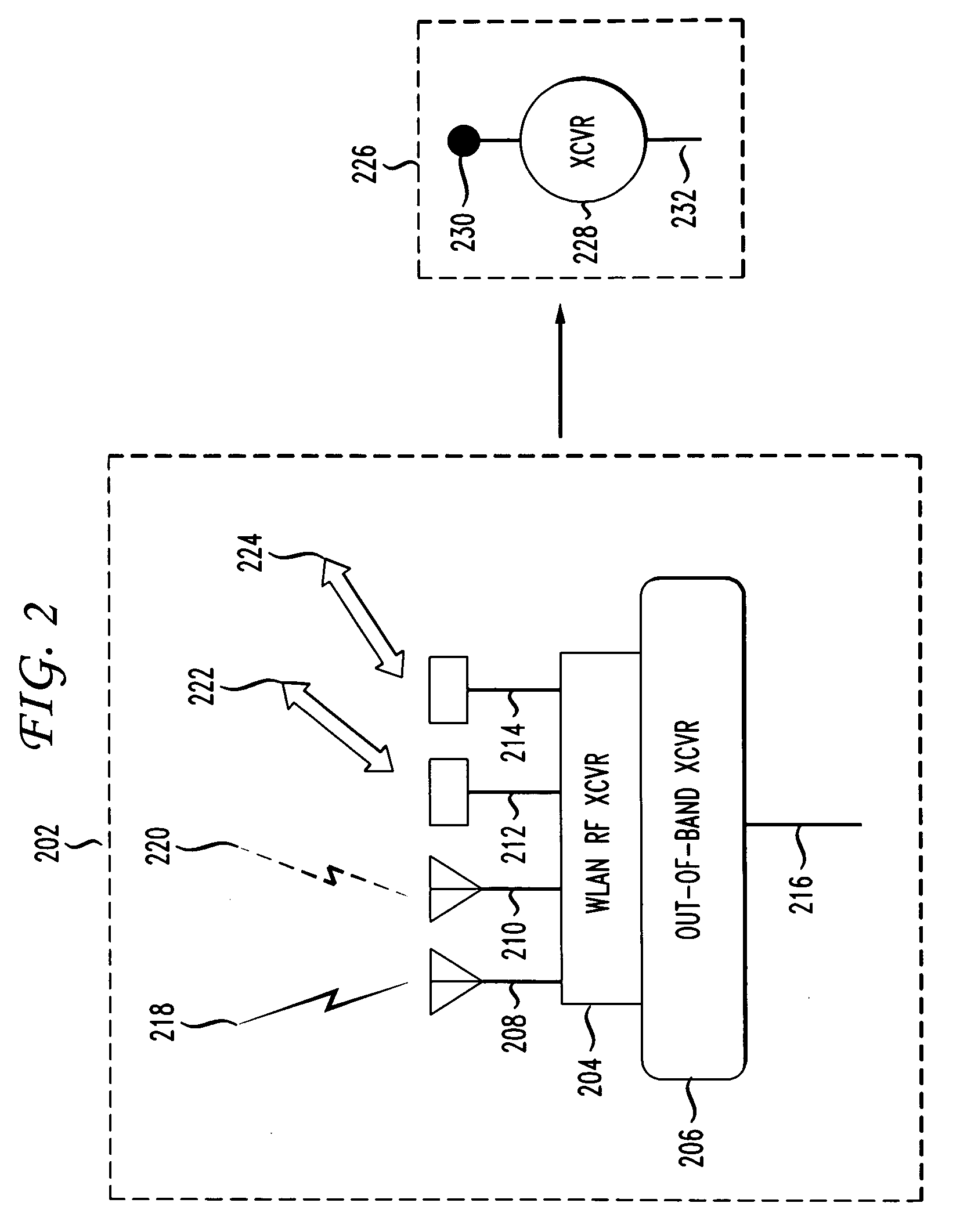Mesh free-space optical system for wireless local area network backhaul
a free space optical system and wireless local area network technology, applied in the field of wireless networks, can solve the problems of limited access to the network, limited patch cable length, and disadvantages of wired infrastructure, and achieve the effects of increasing network reliability, increasing network reliability, and increasing network capacity and provisioning
- Summary
- Abstract
- Description
- Claims
- Application Information
AI Technical Summary
Benefits of technology
Problems solved by technology
Method used
Image
Examples
Embodiment Construction
[0017]FIG. 1 shows a high-level schematic of a packet data network including WLAN 102, WLAN backhaul network 104, and core network 106. Herein, a Wi-Fi network complying with the IEEE 802.11 standard is used as an example of a WLAN. Embodiments of the invention, however, apply to other WLANs as well and are not restricted to Wi-Fi networks. WLAN 102 includes four access points AP1108-AP4114, with WLAN RF communication links WLAN RF link 1126-WLAN RF link 4132, respectively. Backhaul communication links 116-122 connect access points AP1108-AP4114 to backhaul network gateway 134, respectively. For simplicity, herein, a backhaul network gateway is referred to as a gateway. Communication link 124 connects gateway 134 to core network 106. In some instances, communication link 124 connects gateway 134 to an intermediate access network, such as an edge network, which then connects to a core network. Herein, WLAN backhaul network 104 includes the combined set of backhaul communication links...
PUM
 Login to View More
Login to View More Abstract
Description
Claims
Application Information
 Login to View More
Login to View More - R&D
- Intellectual Property
- Life Sciences
- Materials
- Tech Scout
- Unparalleled Data Quality
- Higher Quality Content
- 60% Fewer Hallucinations
Browse by: Latest US Patents, China's latest patents, Technical Efficacy Thesaurus, Application Domain, Technology Topic, Popular Technical Reports.
© 2025 PatSnap. All rights reserved.Legal|Privacy policy|Modern Slavery Act Transparency Statement|Sitemap|About US| Contact US: help@patsnap.com



